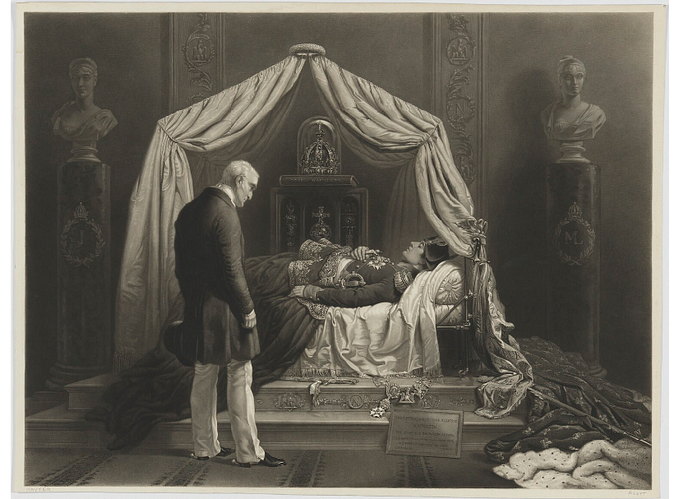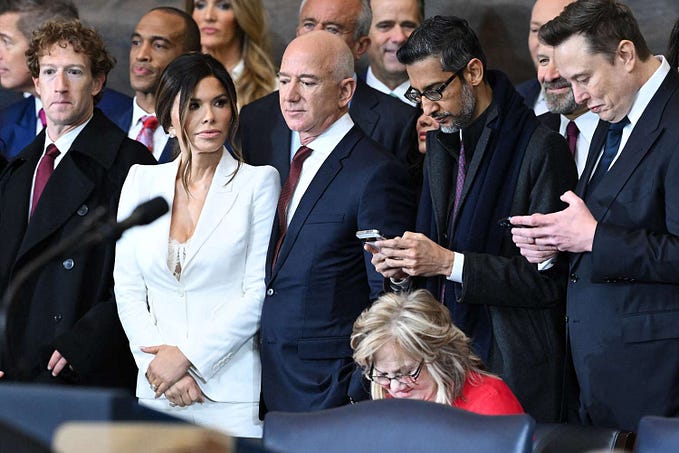2nd Earl of Uxbridge at Waterloo — A story of scandal, heroism and fortitude in the face of adversity.
Barry Newcombe
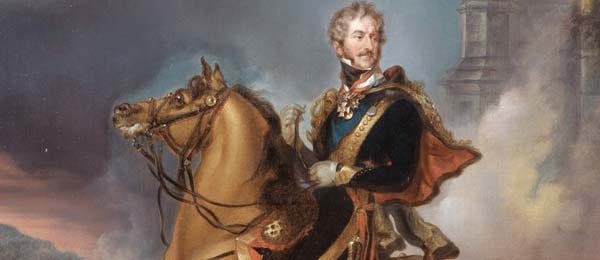
The Earl of Uxbridge (Henry Paget, later Marquess of Anglesey) was an important character at the Battle of Waterloo, and you can see his portrait, by Thomas Lawrence, in the Red Striped Drawing room at Apsley House. But there is quite a story behind this portrait. Firstly he was not Wellington’s choice for second-in-command and leader of the cavalry, but was appointed by the high command at Horse guards. The reason that Wellington did not favour him and that he refused to have him in the Peninsular Campaign, was that Uxbridge had had an affair with Wellington’s sister-in-law lady Charlotte Wellesley. Wellington apparently made light of this at the time, but, it does seem to come out in some of the interactions that the two officers had during the Battle of Waterloo. It could of course be said that Wellington was not himself whiter than white in the matter of fidelity. Also by this time Uxbridge had divorced his wife and married Lady Charlotte.
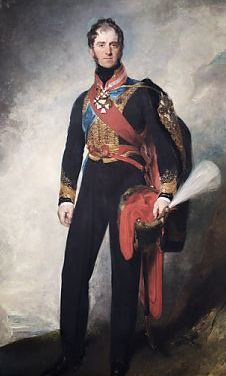
The first we hear of Uxbridge taking action, is in the rear-guard after the battle of Quatre Bras. This difficult defensive move was carried out effectively by Uxbridge and the cavalry who managed to hold off the French pursuit and allow the Allied army to retreat to Waterloo and to form up there in good order.
Wellington apparently did have a clear plan for the battle, in that, should things not go well, he would be able to retreat towards Antwerp and he placed approximately 30,000 men to his West, in order to cover this potential retreat. However, when asked by Uxbridge what his plan was, he merely replied that he had to wait to see what Napoleon would do.
This wait was a little longer than expected as Napoleon was persuaded by his artillery and cavalry officers, to wait for the ground to dry a little before commencing battle, it may also be that many of the French troops were not yet in place and that traditionally they had a good breakfast before battle. At about 11 o’clock a feint attack was made on the outpost of Hougoumont, hoping to draw Wellington’s forces to the west. This did not happen as Wellington was not going to change his dispositions. The main assault was then launched by Napoleon in the East, where Marshal d’Erlon attacked with a large superiority in numbers. The French having often suffered from British tactics of attacking ‘in line’, decided to use this formation themselves. The attack was successful killing General Picton and threatening to break the Allies East side. If they could break up the East, they could then turn and roll up Wellington’s whole army.
Uxbridge, seeing how critical the situation was, personally lead out part of the heavy cavalry and charged the French attackers. They swept aside some Cuirassiers who were mounted on inferior horses (23 years of war had made heavy horses hard to obtain on the continent). They then simply rode over the French infantry who lay down on the ground rather than face the British sabres. Not wishing to repeat this experience the Infantrymen who could, ran back to their own lines in disarray. (They would need some time to reorganise into their own regiments and units). 3,000 of them were captured and many killed. The Scots Greys, in the absence of orders, followed suit and wrought further havoc to the French attack.
This sudden reversal pleased the British commanders, but it was short lived as the heavy cavalry, flushed with success, charged on across the field of Battle, some as far as the French guns. Here they sabred a number of gunners but achieved little as they did not have the spikes and hammers carried by horse artillerymen, which could have put the guns out of action. They were then forced to make the trek back to their own lines. As their horses were ‘blown’, they were ‘easy meat’ for the fresh French cavalry that Napoleon sent out to attack them. The allies’ Heavy cavalry were now a spent force with hugely depleted numbers. Uxbridge was to write later that he wished he had kept further back in the charge, as he may then have been able to exercise some authority over his forces and have prevented the loss of so many. It may be that he was unhorsed, it is thought that he lost between 8 and 9 horses, shot from under him in the course of the battle. When he returned to the command position, Wellington, addressing him with his family name said, ‘Well Paget what do you think of your Cavalry now’. Wellington was generally critical of the Cavalry for rushing about on the field of battle failing to reform and not following orders. But, I wonder if the informality actually reveals some thawing in the relationship.
The main action now moved to the Allies’ centre where Marshal Ney led his cavalry in repeated charges against the Allies’ Infantry formed up in squares. Uxbridge was again in action, but, was only able to use his light Cavalry, to help drive off the French after each charge petered out. Some of the soldiers in the squares were heard to say, ‘where is ‘our’ Cavalry?’ In fact much of it was laying broken, between the Allied and French lines.
With the Prussians arriving, Napoleon made a last throw of the dice to try pull off the victory that he needed to maintain his position as Emperor. He sent in the Imperial Guard to break the centre of the Allied lines. But even these elite troops who had never retreated, were driven back by the British and Dutch, Belgian infantry.
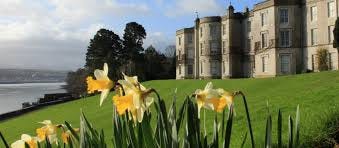
Wellington now ordered the general advance and he and Uxbridge followed their forces after the retreating French. But, one of the last cannon blasts of the day, flung a piece of shrapnel over Wellington’s horses’ neck, striking Uxbridge on the leg. He famously exclaimed, ‘by God I’ve lost my leg!’ (Other accounts say, ‘I’ve got it at last!’). Wellington replying, ‘By God so you have!’.
Wellington dismounted and helped Uxbridge down, he was then taken back to the village of Waterloo, to a house being used as a makeshift hospital, where a surgeon removed the remainder of the leg above the knee. Before the operation Uxbridge reputedly smiled and said, ‘I’ve been a beau for 47 years, it wouldn’t be fair to cut the younger men out any longer.’ The householder requested permission to bury the leg in his garden, where it became a tourist attraction and visitors to the battlefield would pay to come into the garden and visit the shrine of Uxbridge’s leg.
This was not the end of Uxbridge however, he survived the experience and was returned to England where he was fitted with a revolutionary articulated leg, invented by James Potts of Chelsea, which bent at the knee and ankle and had the facility to raise the toes. One of these false legs can still be seen at Uxbridge’s castle ‘Plas Newydd’ in Anglesey.
Uxbridge was created Marquess of Anglesey by the Prince Regent, 5 days after the battle. He also went on to serve as Lord Lieutenant of Ireland and twice as Master of the Ordnance. As well as indulging in his passion for sailing especially around the Med. He was invited to the Waterloo Banquet each year. He died in 1854.
Bibliography:
Waterloo the Hundred days; David Chandler; Pub. Osprey
The Battle of waterloo Experience; Peter and Dan Snow; Pub. Andre Deutsch.
Waterloo New Perspectives; David Hamilton Williams; Pub. Brockhampton Press.
Waterloo, The history of four days three armies and three battles; Bernard Cornwell; Pub. Harper Collins

